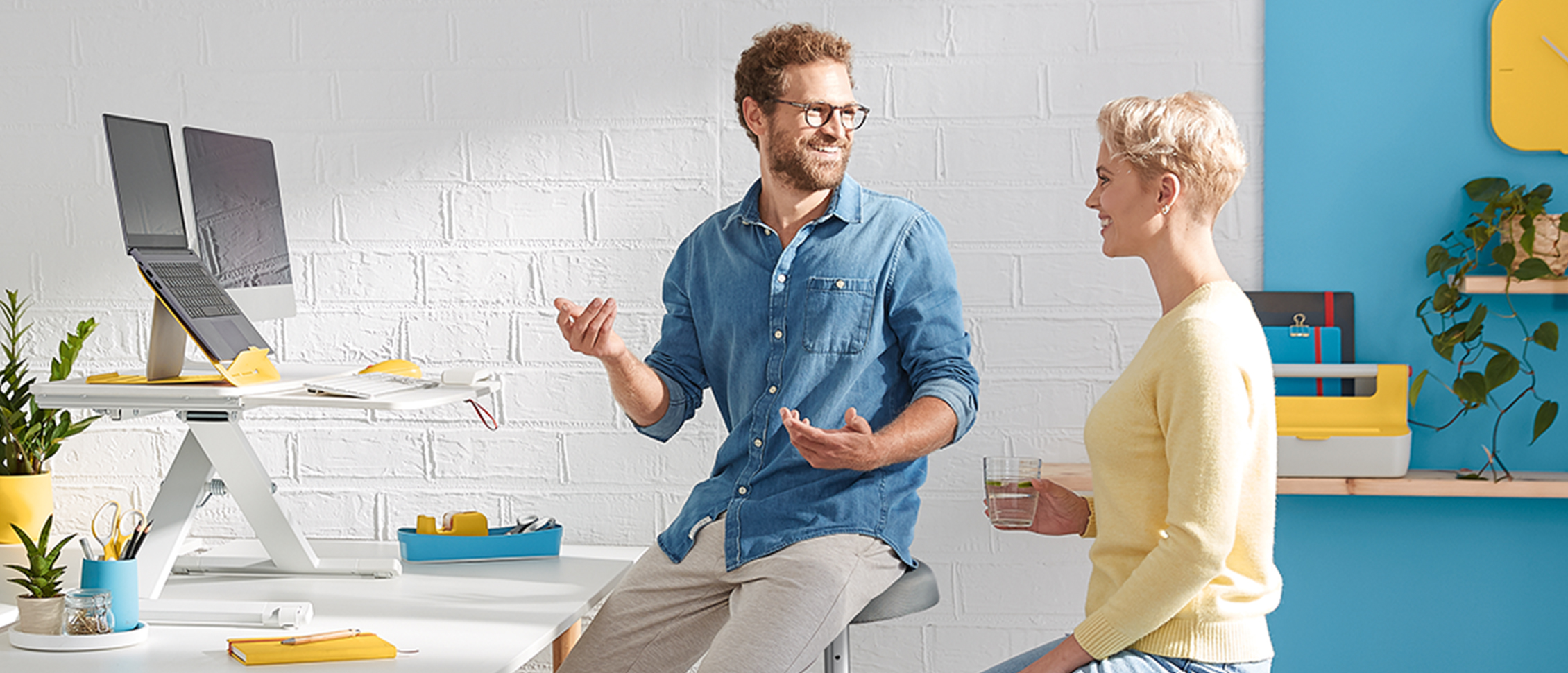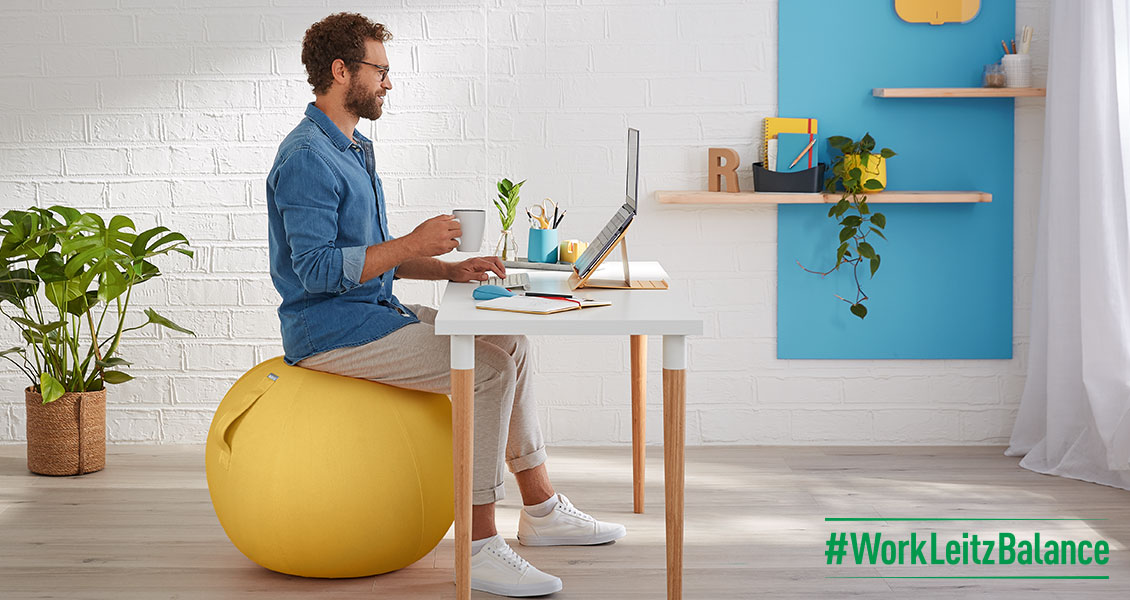The Most Common Working from Home Injuries and How to Avoid Them
26.05.2022

Working from home can bring many benefits to our mental health, work life balance, and productivity. However, without the health and safety regulations that come from working in the office, people who work from home could be at risk of injuries. Whilst the employer will have some responsibility for home workers’ health and safety, you can also take steps to look after your health when working from home.
Common Working from Home Injuries
Many of the common working from home injuries are related to ergonomics and poor use of equipment. Ergonomics refers to how a workstation and tools are designed or placed to suit who is using them, so they can work comfortably and without injury. If your home office or workspace hasn’t been set up with the correct ergonomic design, the below injuries can occur.
Back Pain
Back pain is one of the most common working from home injuries. It can be caused by a number of factors, including poor posture when working, sitting for long periods, or a sudden movement such as turning quickly to reach something behind you. A poorly set up workstation will often result in back pain.

Back pain can manifest as a dull, constant ache, or a sharp pain. If left untreated, it can worsen and cause ongoing issues, such as severe musculoskeletal injury or even deep vein thrombosis.
Repetitive Strain Injury
Repetitive Strain Injury (RSI), sometimes known as Repetitive Motion Injury (RMI) or repetitive stress injury is a musculoskeletal disorder that is caused when repetitive movements cause damage to build up over time. It can occur when doing repeated motions, working with a computer working too much, and also due to bad posture. It results in pain felt in the muscles, nerves and tendons of the affected area. You could also feel a tingling sensation, numbness, stiffness, weakness, or cramp in the area.
It commonly affects the upper part of the body, such as the forearms and elbows, the wrists and hands, and the neck and shoulders. Initially, you might only feel the pain when you are taking part in the repetitive activity. However, if it is left without treatment for too long, you could feel the pain for longer periods. You could also get swelling in the area, which can last for months.
Migraines, Headaches and Eye Strain
Home workers can be at a higher risk of migraines caused by poor, uneven lighting and an incorrect work from home setup. Glare from overhead lighting onto a computer screen can result in migraines. Migraines will cause acute head pain which can be debilitating.
Whilst migraines are severe, workers could also be at risk of less serious, but still painful, headaches when working from home and also eye strain. These can also be caused by glare from improper lighting, or they can be caused by computer monitors being in an incorrect position. This can cause you to strain your eyes to see what is on the screen. Eye strain and headaches could also be caused if you’re working too much at a screen without giving your eyes a break. This can result in dry eyes, fatigue and even blurred vision.
Carpal Tunnel Syndrome
Carpal Tunnel Syndrome occurs when the nerve that runs from the wrist to the hand is pinched over a long period of time. It can be caused by repeatedly bending and straightening your wrist, or by incorrect positioning of your mouse and keyboard leading to your wrist being compressed. Carpal Tunnel Syndrome can result in a tingling sensation, numbness, and pain that is felt in the hand and forearm. In severe cases, it can also lead to weakness and clumsiness, which can make it difficult to perform fine motor functions.
How to Avoid Working from Home Injuries
There are a few steps home workers can take to reduce the risk of injuries when remote working.
Utilise Desk Ergonomics
It’s important to utilise workstation ergonomics that suit you. This includes the positioning of your equipment as well as the equipment you use. The keyboard and mouse should be placed so your forearms are parallel with the desk, and not held at an angle. A keyboard wrist rest and a mouse pad with wrist rest can help to comfortably hold your arms in the correct position whilst you work, to reduce strain and risk of injury.

Your monitor should also be at the correct height to prevent back and neck pain, eye strain, and headaches. This should be directly in front of you at eye level, so you don’t have to bend to see the screen. A monitor stand or laptop stand can help to get your screen in the right position. Our Leitz stands are adjustable, which means you can find exactly the correct height that you need.
You should aim to work in the correct posture. Many people who work from home might use an unsuitable chair, such as a dining chair, that does not provide sufficient support for long periods of working. Instead, you should find an appropriate ergonomic office chair to help improve your posture. Ergonomically designed seat cushions can provide additional support to help you to sit in a comfortable position, and a foot rest can help you to hold your feet in the right place and reduce the risk of knee injuries. Our Leitz adjustable foot rest also has a rocking function that promotes healthy circulation to further maintain your physical health when working from home.
Improve Your Entire Home Office Setup
As well as your desk, you should think about your workspace set up as a whole. You should ensure everything you need is either within easy reaching distance or requires you to fully get up out of your chair to access it – this will help to prevent sudden movements that can result in back pain or a pulled muscle.
You should also consider your home office lighting. Ideally, you’ll want as much natural light as possible. But if that isn’t achievable, you should instead invest in lamps and lighting to reduce the risk of eye strain caused by computer screens.
A sit-stand desk can be a great option for reducing the risk of injury when working. Research has shown that working at a desk can result in injuries such as muscle strain and poor posture due to keeping us in one position for too long. Instead, you should be aiming to change position routinely throughout the day. A sit-stand desk is ideal for helping you to do this, allowing you to pick between sitting and standing, and keeping you moving and active. Sit-stand desks negate the risk of injuries that can come with sitting for too long, as can happen at a traditional desk, and also the aches, pains and fatigue that can come from a standing desk that doesn’t offer an option to sit. They can also seamlessly help you to change position quickly and easily, so you can continue working and stay focused.

If you frequently take part in meetings or phone calls that also require you to type at the same time, you shouldn’t hold your phone between your ear and shoulder. Instead, you should use a headset so you can maintain good posture and prevent neck strain.
Take Breaks
Many working from home injuries are either caused by repetitive activities or long periods of inactivity. Sitting in one position for too long, looking at a screen for too long, or undertaking a repetitive task for a long period can all result in various injuries. So, to prevent this, you should be taking regular breaks from your work.
When taking a break, you should try to step away from your desk. This could involve taking some time to refocus your eyes by going outside to look at something far away. You could also use this opportunity to go for a quick walk to get your body moving and improve circulation. You should aim to take even a quick 5-minute break at least every hour, so you can change your position and reduce the risk of injury.
During your breaks, you should also take the opportunity to stretch your body. You could stretch out your wrists, your legs, your back, and your neck, incorporating these into some desk exercises that you do throughout the day. Stretching regularly can help to improve circulation and reduce the risk of aches and pains that come from working at a desk.
Leitz has a range working from home essentials to improve your ergonomics and keep you organised and productive.
Read more about staying healthy when working from home:
8 Must-Have Products to Allergy-Proof Your Home
Quick Changes to Make to Your Workstation to Improve Ergonomics
Is 10,000 Steps the Secret to Working from Home?